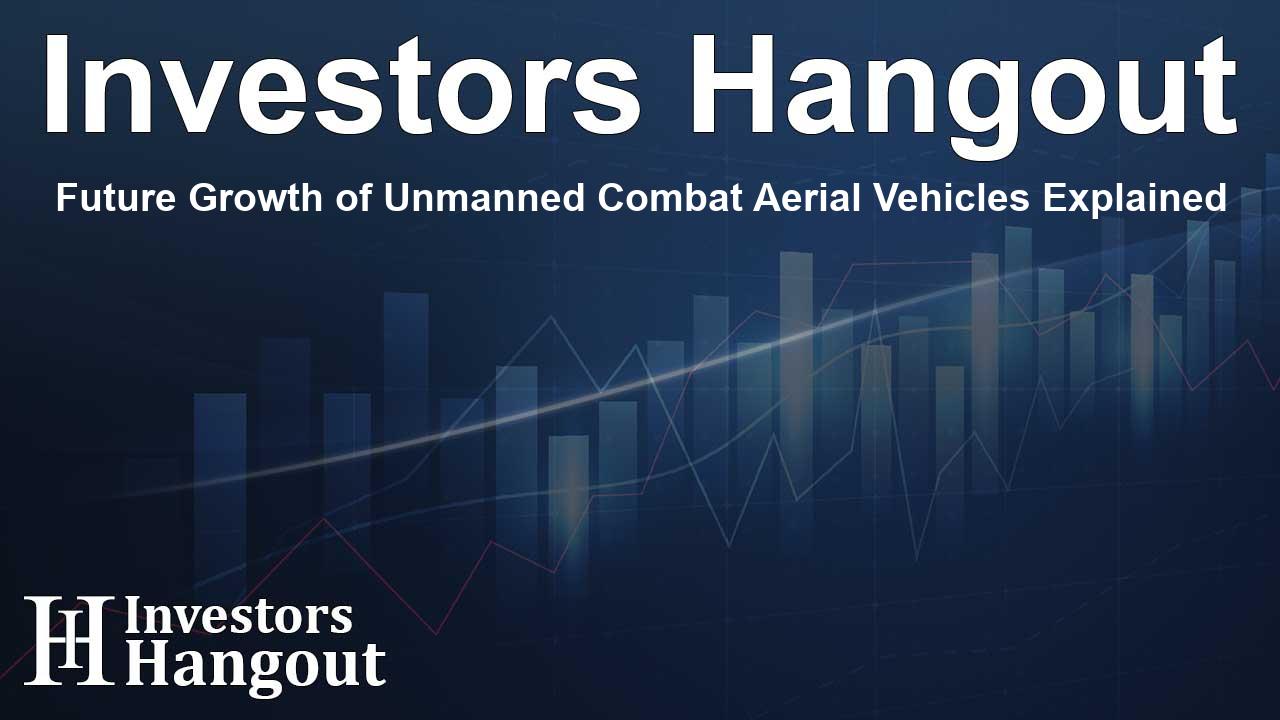Future Growth of Unmanned Combat Aerial Vehicles Explained

Understanding the Unmanned Combat Aerial Vehicle Market
The Unmanned Combat Aerial Vehicle (UCAV) market is gaining remarkable traction, with an estimated value of over US$ 32,140.3 million by the year 2034. This growth, roughly at a compound annual growth rate (CAGR) of 9.9%, is primarily driven by the increasing demand for autonomous warfare systems. These advanced systems are designed to enhance precision, enable effective surveillance, and reduce risks associated with human involvement in combat situations.
Key Drivers of the UCAV Market
One of the main factors fueling the growth of the UCAV market is the necessity for modern military capabilities. As geopolitical tensions escalate, nations are investing more in advanced technologies like UCAVs. These aerial vehicles combine stealth, speed, and enhanced payload technology, making them indispensable in contemporary military operations. Countries are leveraging UCAVs for critical missions including border surveillance, counterinsurgency efforts, and maritime security, addressing both strategic military needs and national defense strategies.
Recent Developments in the UCAV Industry
Recent collaborations in the UCAV sector highlight the push for innovation and tactical advantages. For example, at a significant exhibition event, a notable partnership was established between Baykar from Turkey and ORQA from Croatia, focusing on deploying FPV drones in hostile environments. This development not only signifies technological advancement but also marks a shift in how military operations are being conducted, showcasing the strategic edge these collaborations can offer.
Industry Partnerships that Matter
Strategic partnerships are vital in the UCAV industry, leading to innovative solutions and technological advancements. With such collaborations, companies aim to enhance their operational strategies and gain a competitive edge by developing systems capable of operating cohesively within contested environments. As these developments unfold, the capability of UCAVs in tactical applications is expected to expand significantly.
Market Insights and Player Landscape
The competitive landscape of the UCAV market includes prominent players such as BAE Systems, BAYKAR TECH, Boeing, and Northrop Grumman among others. These companies are investing heavily in research and development to innovate within the industry. This includes not only advancements in drone technology but also collaborations to improve operational capabilities and streamline state-of-the-art enhancements.
Significant Market Opportunities
With North America projected to hold a substantial market share of 35.4% by the year 2034, it is evident that the region is a hotbed for UCAV technology advancement. Additionally, the combined opportunity in North America, the Middle East, and Africa presents a lucrative market for investment and growth in UCAVs, estimated to reach US$ 12,097.3 million.
Technological Innovations Shaping the Future
Technological innovations continue to reshape the UCAV landscape. The integration of AI, enhanced payload capabilities, and stealth technologies is pivotal. Companies are focused on not only expanding their market presence but also enhancing the functionality of their UCAVs through progressive technological solutions. For instance, Elbit Systems has recently secured agreements worth US$ 40 million to supply the Israeli military with advanced drones aimed at intelligence-gathering and tactical operations.
Smart Enhancements and Military Applications
The future of UCAVs appears promising as various nations look to improve their military assets. Innovations in drone technology are integral to modern warfare strategies, with UCAVs facilitating intelligence, reconnaissance, and precise strikes while significantly mitigating human risk. This progressive military paradigm shifts the traditional roles and capabilities of armed forces globally.
Frequently Asked Questions
What is driving the growth of the UCAV market?
The UCAV market is primarily driven by the demand for autonomous warfare systems that enhance precision and reduce risks to human operatives in conflict zones.
Who are the key players in the UCAV market?
Prominent players include BAE Systems, BAYKAR TECH, Boeing, and Northrop Grumman, among others, focusing on innovation and strategic partnerships.
What are the main applications of UCAVs?
UCAVs are utilized for border surveillance, counterinsurgency, and maritime security, revealing their vital role in national defense strategies.
How does technological advancement impact the UCAV market?
Technological advancements, particularly in AI and stealth technologies, significantly enhance the capabilities and effectiveness of UCAVs in military operations.
What is the expected market size of UCAVs by 2034?
The UCAV market is projected to surpass US$ 32,140.3 million by 2034, with a CAGR of 9.9% from 2024.
About Investors Hangout
Investors Hangout is a leading online stock forum for financial discussion and learning, offering a wide range of free tools and resources. It draws in traders of all levels, who exchange market knowledge, investigate trading tactics, and keep an eye on industry developments in real time. Featuring financial articles, stock message boards, quotes, charts, company profiles, and live news updates. Through cooperative learning and a wealth of informational resources, it helps users from novices creating their first portfolios to experts honing their techniques. Join Investors Hangout today: https://investorshangout.com/
Disclaimer: The content of this article is solely for general informational purposes only; it does not represent legal, financial, or investment advice. Investors Hangout does not offer financial advice; the author is not a licensed financial advisor. Consult a qualified advisor before making any financial or investment decisions based on this article. The author's interpretation of publicly available data presented here; as a result, they should not be taken as advice to purchase, sell, or hold any securities mentioned or any other investments. If any of the material offered here is inaccurate, please contact us for corrections.